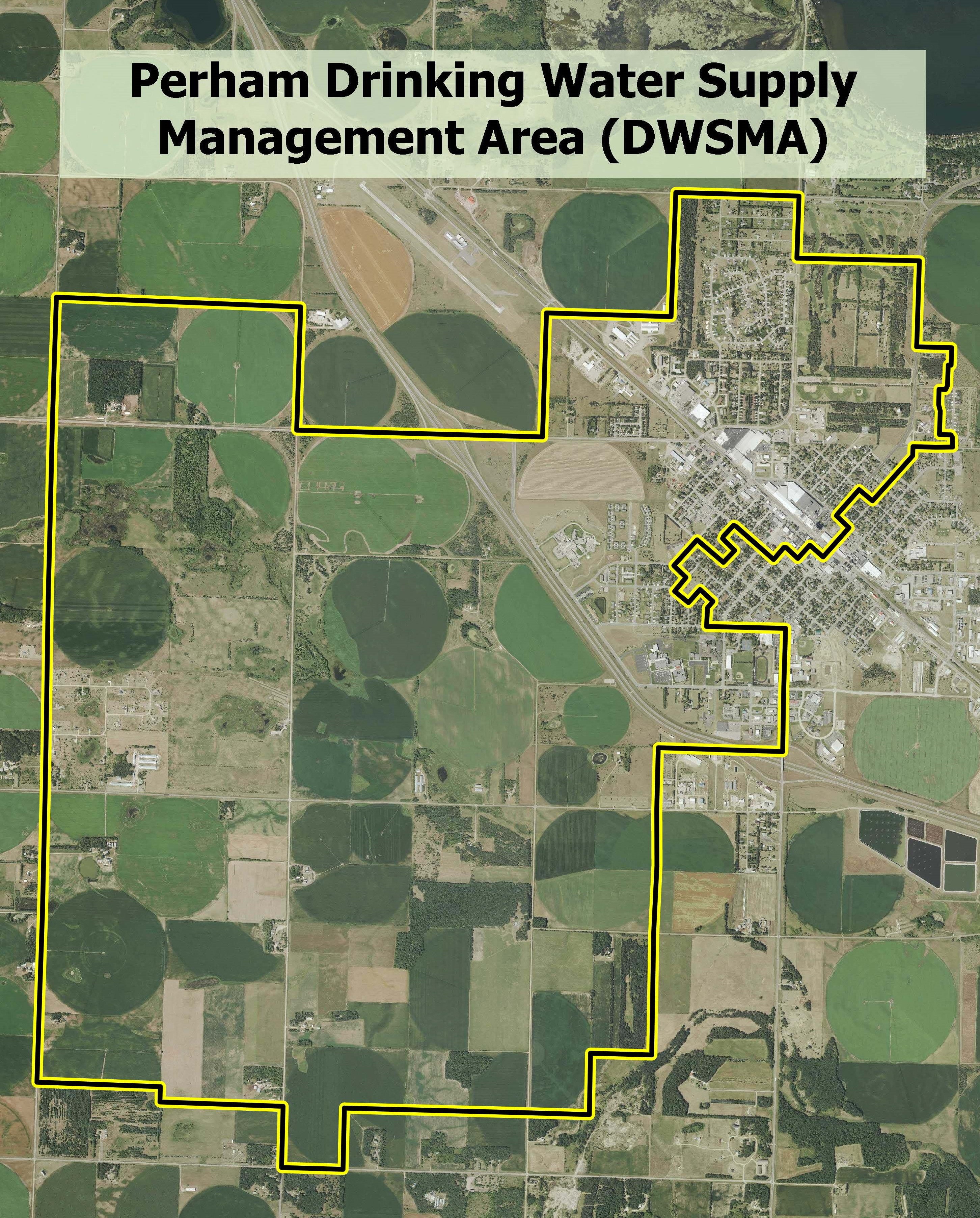
A list of nitrogen best management practices (BMPs) and alternative management tools (AMTs) to protect groundwater within the Adrian Drinking Water Supply Management Area (DWSMA) has been approved by the MDA and published in August 2025.
The list of practices was developed by the MDA in consultation with the Local Advisory Team (LAT). The BMPs that apply to your cropland will need to be adopted on at least 80% of cropland (excluding soybean acres) within the DWSMA. AMTs can be voluntarily adopted and used to replace BMPs. A summary of the information used by the MDA to develop the list is also available. Both documents can be found under "Forms + Resources".
The BMP list identifies practices for coarse and fine textured soils. An interactive map of the Perham DWSMA is available to illustrate where coarse soils are present.
Note that Part 1 of the Groundwater Protection Rule restricts the application of nitrogen fertilizer in the fall and on frozen soils in this DWSMA unless producers are following the exceptions to the rule.
After no less than three growing seasons following the publication of this list, the MDA will conduct an evaluation to determine if the BMPs or AMTs have been adopted in the Adrian DWSMA. If during this evaluation less than 80% of the cropland acres within the DWSMA have adopted the BMPs or AMTs listed, the DWSMA may be designated a Mitigation Level 3 and the adoption of the BMPs will be required.
Perham DWSMA Details
Due to elevated levels of nitrate-nitrogen, the Perham Drinking Water Supply Management Area (DWSMA) has been listed at a Mitigation Level 2 under the Groundwater Protection Rule. To learn more about the process visit Mitigation Level Determination.
- Designated a Mitigation Level 2 on January 15, 2023 using the following criteria
- One or more public wells have exceeded 8 mg/L nitrate within the past 10 years
- No point source of nitrate found to be the cause of the elevated nitrate level
(i.e., ag chemical incidents, animal feedlots, improperly sealed wells, etc.)
- The DWSMA is approximately 5,869 acres (high vulnerability area)
- There are approximately 45 cropland owners and operators within the DWSMA
- Located in Otter Tail County
- There are two public wells that have tested above 8 mg/L in the past ten years
Local Advisory Team
The MDA established a Local Advisory Team (LAT), consisting of local farmers and agronomists.
The primary functions of the LAT are to:
- Advise the MDA on the appropriate nitrogen fertilizer Best Management Practices (BMPs) for the project area.
- Explore opportunities to use Alternative Management Tools (AMTs) in targeted high-risk areas.
- Provide the MDA with guidance on the most effective methods to communicate with the agricultural community in the local project area.
- Support the implementation of the BMPs and AMTs at the local level.
Throughout 2023-2025, MDA staff met with the Perham LAT reviewing agronomic information and the MDA’s analysis of nitrogen loss below cropland within the DWSMA. Below is a list of milestones that were met during this process. The LAT will continue to meet once annually to review new public well nitrate data and discuss ongoing implementation of practices that protect groundwater within the DWSMA.
Status of the Perham DWSMA LAT
- Formed a local advisory team
- The team is actively meeting
- Interviewed local farmers and agronomists to gather information on the current nitrogen fertilizer management practices within the DWSMA
- Mapped the boundaries of cropland within this DWSMA
- Completed computer modeling of nitrate loss below the crop rooting zone within this DWSMA
- In consultation with the LAT, a list of BMPs and AMTs that are practicable and appropriate for protecting groundwater within this DWSMA was developed and approved by the MDA.
- A formal evaluation of BMP adoption in this area could occur as soon as the 2028 growing season.
MDA will continue to work with the LAT, local farmers, crop advisers and local conservation district partners on communication of the importance of these practices, providing technical assistance, and any grants or cost share funding available to support adoption.

